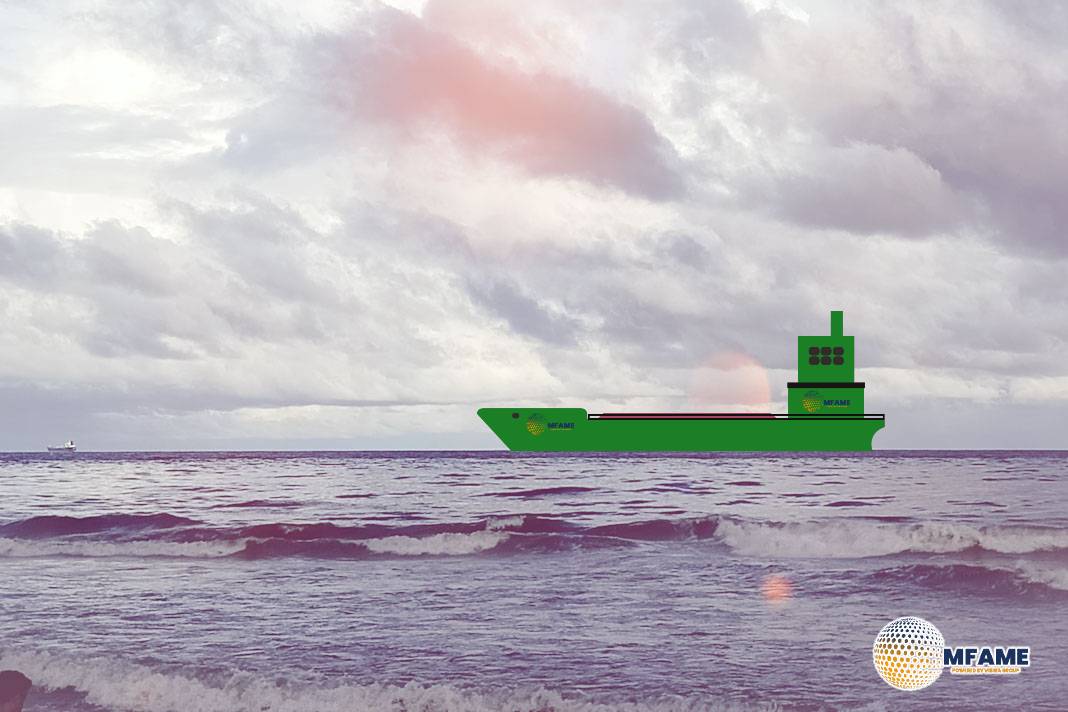The downward trend in both oil and stock markets persists, with yesterday’s brief optimism proving to be a temporary and ultimately insignificant rebound. In the Very Large Crude Carrier (VLCC) market, freight rates are essentially moving sideways, showing minimal fluctuations and experiencing slight, almost imperceptible declines despite a substantial volume of cargo available, reports Fearnleys.
VLCC
The only positive aspect for tanker owners currently is the decline in bunker prices, mirroring the fall in oil prices. Despite the focus on stock market volatility, there hasn’t been a significant short-term change in the tanker market. Lower bunker costs are supporting daily returns in the mid-USD 30,000 range for top-performing vessels, a level that has acted as a soft floor recently.
However, the impact of US President Trump’s actions is undeniable on market sentiment, with fear and greed playing significant roles. At the time of writing, charterers clearly hold the advantage in negotiations.
On a more encouraging note for the tanker industry, OPEC+ has decided to reverse some production cuts, amounting to 411,000 barrels per day, which will take effect in May. Cargo stems related to this increased production are expected to enter the market as early as next week and should help to limit further downward pressure on rates.
Suezmax
Yesterday proved to be a day of significant disruptions in the Suezmax market globally, with the most notable failures occurring in the United States. Consequently, rates for both Aframax and Suezmax replacements experienced a sharp surge. Reports indicate fixtures concluded at 70,000 dwt x WS200 for Aframax and 145,000 dwt x WS102.5 for Suezmax replacements.
The tightness of tonnage on both sides of the Atlantic is further highlighted by the latest Suezmax fixture, which repeated the WS102.5 rate for a vessel loading from Canaport on April 16th with an intended discharge between April 27th and 28th. This illustrates charterers’ willingness to take risks on vessel itineraries to secure tonnage while still paying firm rates. For remaining stems with loading dates between April 25th and 30th, it is anticipated that more unconventional local itineraries ex-USAC (US Atlantic Coast), ECC (East Coast Canada), and USG (US Gulf) will be utilized as prompt tonnage ex-UKCM (UK Continent/Mediterranean) with April estimated time of arrivals (ETAs) becomes increasingly scarce.
Out of West Africa, a significant number of stems, many of which are replacements, remain outstanding. Owners’ reluctance to extend subjects (provisional agreements) suggests a strong belief in further upward potential in the market, which is understandable given the current market fundamentals. However, a lower rate was reported for an Angola/ECC fixture (possibly involving two discharge ports), but this deal is somewhat logical considering the vessel’s scheduled opening in Saldanha on April 17th and the substantial flat rate agreed upon. While April cargo volumes are nearing their end-of-month phase, the commencement of May dates for CPC (presumably relating to a specific charterer or trade route) will provide European owners with another source of cargoes to consider once the West Africa market inevitably slows down towards the end of this week or early next.
The Middle East Gulf (MEG) market has also experienced a strong week. Rates have remained stable thus far, but the significant reduction in available tonnage and the strong performance of the Western hemisphere are likely to bolster owners’ confidence. Furthermore, vessels are expected to continue ballasting towards the Cape of Good Hope (COGH), and there is a possibility that vessels in Indian or MEG positions capable of transiting the Red Sea will be sought after for CPC cargoes.
Aframax
The latter part of the previous week saw significant chartering activity, covering a substantial portion of the second decade of April. However, some cargoes were still without fixed vessels, potentially leading to delays in delivery windows or requiring vessels to travel longer distances. The start of the current week was slow, but rates in the US market have since firmed, which is expected to incentivize more vessels to ballast towards the region. While the immediate availability of suitable tonnage is currently lower, the list of available vessels is anticipated to grow as we move into the third decade of April.
The Mediterranean market experienced robust activity, but the high number of available vessels created a competitive environment, pushing rates downwards as fixing for the third decade of April commenced. In contrast, the Black Sea market has maintained higher earnings, with limited opportunities for Aframax vessels and a scarcity of available candidates. A forthcoming test of the market will reveal any potential corrections. The short-term direction of this Mediterranean market will largely depend on the resilience of the surrounding shipping sectors.
Did you subscribe to our daily Newsletter?
It’s Free Click here to Subscribe!
Source: Fearnleys


















